The vital addition to the Home Front that saved thousands!
Learning from the Past
In 1937, the British government officials predicted that in any future war with Germany, bombing raids on the Home Front would cause large casualties. The German air raids on Britain in the First World War had killed 1,413 people. Prior to the Second World War it was estimated that Germany would bomb Britain immediately after the outbreak of war and continue their assault for 60 days. It was thought that each ton of explosive would kill or wound 50 people, a total of almost two million casualties.

In 1938, the Munich crisis led to the digging of trenches in public parks and by the outbreak of the war in 1939, enough covered trenches were available to shelter half a million people. At the same time, a new form of protection, the Anderson shelter, was issued.
The Anderson Shelter
The Anderson shelter was intended to be erected in a town or suburban back garden and to accommodate up to six people. Designed by William Paterson, and named after the Lord Privy Seal, John Anderson, who was responsible for British Civil Defence. The Anderson shelter consisted of 14 panels of corrugated galvanised steel: six curved panels formed the roof, six straight ones completed the walls and two straight panels were erected at each end, one fitted with a door. As you can see from the picture below.
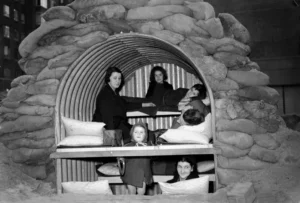
Anderson shelters were issued free to households who earned less than £250 a year; anyone with a higher income had to pay £7. Up to the outbreak of war, over 1.5 million shelters were distributed, and a further 2 million after that. The Anderson Shelter did provide good protection except from a direct hit from a bomb. However, as the war progressed and all-night alerts became more frequent, it was found that, particularly in winter many people were reluctant to go to a damp cold hole in the ground, which was usually flooded. This meaning a lot of people’s lives were at risk if they were to just stay in their homes.
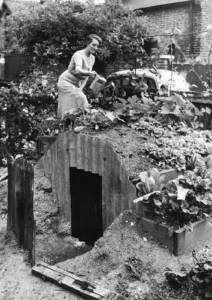
The Morrison Shelter
Because many houses lacked cellars, Herbert Morrison, the Minister of Home Secretary, decided that there was a need for an effective indoor shelter. The result was the Morrison Shelter, devised by John Baker. It was an issued in kit form to be bolted together inside the house and consisted of a 1.8 metre cage. It had a steel top, wire mesh sides and a steel floor. The shelter was designed to protect people from the upper floor of a typical two-storey house falling on them if the house collapsed through a blast. A lot of families slept in the cage on a night and used the cage as a dining table on other occasions. Over half a million Morrison Shelters were issued during the war and they were highly effective, saving many lives.
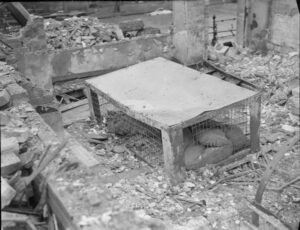

Public Shelters
Alternatively, for those who had no access to their own Air Raid Shelter they were other options available to help them to safety in an air raid attack. It was quickly recognized that there was a need to protect members of the public who might be on the streets or in public spaces. A big programme of street communal shelters was begun in March 1940. These surface shelters were intended to accommodate fifty people. Problems with quality control, in their hurried construction, meant that some failed to provide the protection expected. Rumours began to circulate and although improved designs were introduced, they became very unpopular and remained so throughout the war.
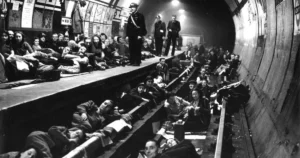
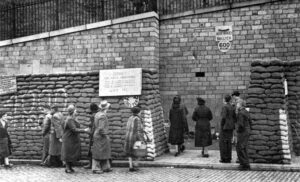
At first government ministers had misgivings about the use of tube stations and underground tunnels as air raid shelters. However, Londoners preferred to use the tunnels and platforms because they felt safest deep underground.


